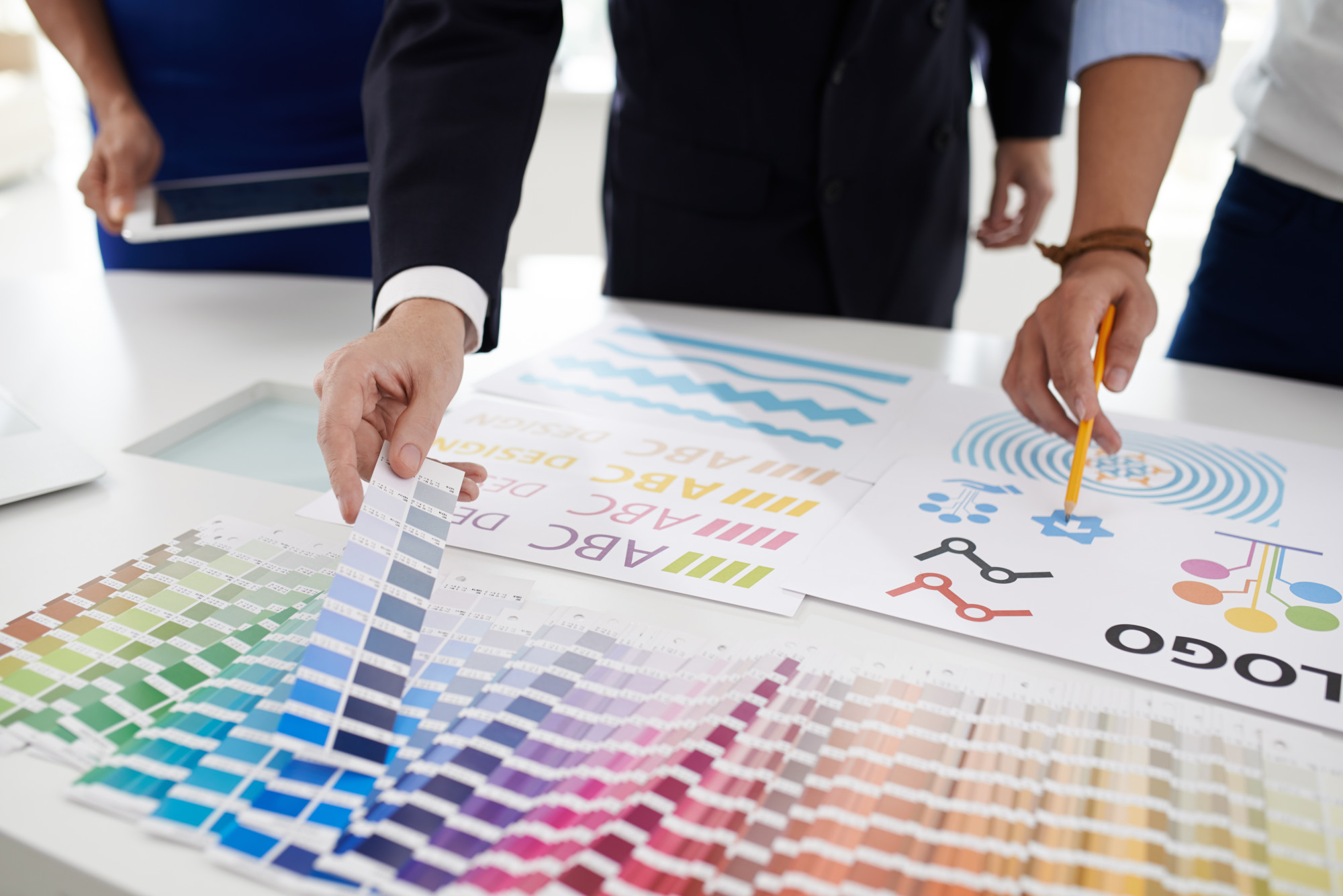An Earth Lover’s Guide on How to Recycle Wood
Posted on October 06, 2020 by Logo Design Tips and Tricks

You care a lot about the earth, and you rightfully should. After all, Earth is our home, and if we take care of it, it will take care of us in return. That being the case, you’ve set out to do the right thing by being environmentally friendly whenever you can and recycling all of your unneeded materials for someone else to benefit from.
That being the case, you may have run into a dilemma in concerns about how to recycle wood. It may seem silly at first; after all, wood is a natural resource, and it’s very biodegradable and even healthy to the environment. However, you’re not looking to dispose of your wood products, but rather to give them away to be reused in another piece of equipment and reduce the cutting of trees.
With this in mind, there are plenty of ways that you can recycle your wood and get us one step closer to a healthier, happier Earth. Read this article to find out what you can do!
First, Find Out if Your Wood Is Recyclable
The first thing you need to know is that all wood is not created the same. While many wood products only go so far as to be treated for preservation purposes, others may have various chemicals added to the mix that could cause problems in recycling and could even cause health problems if not taken care of properly, and they’ve been banned as a result.
To avoid this problem, find out if your wooden products contain elements such as creosote, and they also cannot be painted, stained, or otherwise contaminated. Make sure that your wood is free of these contaminants before you take them to be recycled.
Dispose of Your Wood at a Wood Processing Facility
After you find out if your wood is safe for recycling purposes, one of the first options you may want to look into is a wood procession facility. These facilities are designed to take unused wood and process it into other usable materials, and since they specialize in this process you can be sure they will do the job properly.
Wood processing facilities are great if you have a bulk amount of solid wood waste, so if you’ve just finished working on building your new shed you can toss your shaved wood parts into a container and the facility will take care of them. Better still, the transaction is low-cost, and they may even take your wood for free if it’s in good condition.
Reuse or Repurpose It
Before you go about recycling or processing your used wood products, you may want to think about trying to reuse them or find another purpose for them. Oftentimes, wooden products can still offer some great value after their original purpose has been fulfilled, and you can still help preserve the environment by taking care of your wood this way.
The impressive thing about wood products is that they can be used for various needs, and they’re easy to cut, shape, or otherwise modify to fit your desired purpose. Best of all, treated wood can last for many years, so whenever you’re done using your wood for one purpose, you can switch things up and use it for another purpose and get the maximum use out of your materials.
Take It to a Recycling Center
If a processing center isn’t nearby, and you can’t think of any way to repurpose the wood, you can take it to a recycling center instead.
Recycling centers can take almost any modern material and find a way to recycle it for future use in other products. Your unneeded wood could be processed into a soil container, made into pulp, or even used as a compost additive, just to name a few. These centers can also recycle a variety of different solid wood products, including furniture and small outdoor wooden equipment, and can even handle pallet disposal.
Some recycling centers may even give you a small payment for giving them your wood products as an incentive to make others join in on helping to protect the earth.
Don’t Place Your Wood in a Recycle Bin
You may find out that a recycling or processing center is a bit of a drive from your place, and the option of a recycle bin is only a few blocks down. As tempting as that may seem, it’s never a good idea to place your used wood products in a recycle bin, as that only creates problems for the recycling business.
Recycle bins were placed in areas of convenience for a reason: to help people quickly and easily dispose of everyday products. These bins are designed to hold items such as plastic bottles, aluminum cans, and used paper. Putting wooden products into the bin could cause problems for the recycling companies, so the best bet is to take your wooden products to a recycling or processing center in the area.
Try Out a Biomass-to-Energy Producer
Even though they work behind a big name, biomass-to-energy producers carry out a good service. If there aren’t any wood processors or recycling companies around, these guys are the next best thing.
As the name implies, a biomass-to-energy producer takes a nature-based product and converts it into energy that can be used to generate electricity or steam. The combustion of the wood will of course create emissions, but since wood is a product that’s naturally cleaner than fossil fuels, the influence that their burning may have on the earth is practically nonexistent.
Now You Know How to Recycle Wood
You’ve learned all about how to recycle wood, and now you’ll be able to take care of your recycling needs with ease. Make sure to look through our site to learn more about different tips and tricks that can help you succeed in everything you do. We know you’re going to like what you see!
A Simple Guide to Creating Marketing Logos
Posted on October 06, 2020 by Logo Design Tips and Tricks

Did you know that Pepsi paid $1 million to design their logo?
That might sound excessive, but Pepsi knew the importance of good design. Some other brands who also got the message include McDonald’s, Apple, and Nike, all of whom can be recognized by millions of people from just their logo!
Whether you’re aiming for global fame or just want to build up local recognition, a logo is always a good place to start. But how do you design yours?
Find out more in our guide to how to create marketing logos to win over your audience.
1. Define Your Brand
Logo marketing is all about showing the world who your brand is. You really want your design to show off the personality of your brand, but to do that you have to make sure you know it too. Here are some questions to help you work out your brand identity:
- Why did you start your business?
- What are the most important values in your business?
- How do you stand out from competition?
- What 3 words best describe your brand?
2. Do Your Research
Once you’ve worked out who you are, it’s time to do some research. Start by finding inspiration from other brand logos and compiling a mood board. You could make a physical board or use a website like Pinterest so you can share it easily.
You also need to check out the competition. Look at what colors they’re using, the style of their designs, and how their brand personalities are coming across. You can use some of this for inspiration but make sure your logo ideas are different enough to stand out.
3. Choose Your Design Style
Once you have a clear idea of what you need, it’s time to move onto logo design! Start by deciding on the styles you like. Some different options include:
- Classic and traditional
- Retro
- Minimalist
- Quirky and fun
- Hand drawn
4. Look at Color and Typography
When creating marketing logos, color is vital. Not only should this help bring out your brand personality and tie in with colors you’re already using, it can also be used to influence your customers. Look into color psychology to find out more!
5. Work With Your Designer
Just as when creating content, where you’d use a company like Farm Fresh Content Marketing to get the job done properly, you need a logo designer. You’ll need to communicate effectively with your designer. Make sure they know all the information you’ve collected above and you both have a clear idea about the kind of logo you want.
If you’d prefer to design yours yourself, use an online logo maker to create it. These tools make the design process a lot easier and quicker, and you can build a professional logo in less than an hour!
Create Professional Marketing Logos
Once you’ve been through these steps and found an awesome designer or logo maker, it’s time to start creating your marketing logos! You should have a few different options designed so that you can pick the perfect logo for your brand.
If you enjoyed this article, be sure to check out more on our website!
5 Reasons Hotels Can’t Checkout on SEO Marketing Strategy
Posted on October 05, 2020 by Logo Design Tips and Tricks

Did you know that 60% of all travel searches start on mobile? People are searching online for where to stay, where to eat, and what to do. So, if you want to increase your nightly capacity at your hotel, you need to be online.
You can attract your ideal visitors to your hotel by attracting them to your website first. If you’re wondering how your website marketing strategy can help your hotel grow, then you’re in the right place.
Don’t spend any more time wondering how content marketing can increase visitors to your website. Keep reading to learn five ways SEO can help your hotel increase your capacity every night.
1. Target Your Ideal Visitors With Targeted Keywords
Go further than simply targeting “hotels in your city” and target your ideal visitors. You can do this by writing articles about the museums in your city or the top dog parks in your city. These articles will attract people who want to visit your city but aren’t sure if they can find a pet-friendly location.
2. Attract More Visitors With List Posts
Some visitors aren’t sure where they want to go, so list posts can be a great way to cast a wider net for future clientele. Use your favorite keyword finder software to target searched for terms such as “top cities for families.” Include your city and hotel in your article and you’ve naturally incorporated your search and your sales pitch without seeming spammy.
3. Guest Post on the Sites Your Visitors Are Also Visiting
Your content marketing doesn’t have to stop on your own webpage. Write great content for several travel blogs and you will reach a much larger audience. Link back to your website and you’ll naturally drive visitors back to book with you.
4. Optimize your website for maximum ROI
Nobody likes a slow website. In fact, most people will leave your site if it takes longer than three seconds to load. So don’t neglect the technical side of your site, be sure to optimize it so it is running smoothly and quickly.
5. Get Help When You Need It for Your Marketing Strategy
You don’t have the time to spend hours on your website and blog. So, outsource your content marketing to an expert who can help you grow your business through organic search. Your hotel SEO marketing is too important to leave to chance. Bring on the experts and watch your business skyrocket next vacation season.
Increase Visitors To Your Hotel by Driving Visitors To Your Website
You want to increase your hotel capacity night-over-night. That begins by driving visitors to your website and gaining their trust with helpful information.
People are visiting your city every day. But are they staying with you? Get visible and share your love for your city through your blog and optimized marketing strategy.
That will, in turn, drive traffic to your hotel and raise your bottom line. Don’t stand empty any longer. Use the valuable real estate on your website to get visitors and grow your guest list naturally and organically with content marketing.
For more great information on this and other topics check out the rest of our blog.
What Is a Patent and Do I Really Need One?
Posted on October 05, 2020 by Logo Design Tips and Tricks

So you’ve invented something, that’s amazing! Now you may be thinking about how to protect your invention and make sure you get the credit for your discovery.
At this point, you may have come across the word patent and be asking yourself what is a patent? We’ve gathered all the things you need to know about patents in one convenient place do you don’t have to go searching.
If you want to know what a patent is, if you need one, and how you go about getting one keep reading to find out!
What Is a Patent?
A patent is a legal license granting the right and title to an individual or company to be the only one that can make, sell, or us an invention. The patent will exclude anyone else from recreating the same invention to profit off of.
Patents are similar to copyrights and are granted legally for a certain period of time. It will need to be reapplied and renewed once the period ends so that another individual or company doesn’t buy out the patent.
What Are Patents Useful for?
What is a patent useful for? Protecting your intellectual property and a means to have a legal case against intellectual property theft.
Say for example you create a new machine or a new way of doing something that will revolutionize the market you will want to protect this idea from it getting stolen. You’d do this to protect that idea from getting taken from you and someone else profiting off of your idea.
In the event that someone does steal your idea, a patent allows you to make a legal claim against the individual or company that stole it. Since you hold the patent rights, you can take the idea thief to court and not only get any money they made off your idea but also have them pay you a sum for the theft.
How Do I Get a Patent?
We’ve covered what is a patent, now we’ll look into how to get a patent.
The first thing you’ll want to do is collect all your paperwork for your invention including and notes and research that prove that the idea was fully and one hundred percent yours. The patent office will need undeniable proof that the invention that you’re bringing to them is not a replica or stolen from someone else.
The second thing to do is check to see if your idea qualifies for patent protection. There are quite a few things required in over to qualify for a patent. You will need to make sure your patent is unique and the first of it’s kind.
It will also need to be something that works and has a useful function. You will also need to make sure that it meets the criteria of inventiveness, meaning that it will have to be something that’s completely new or an improvement to something that’s already existing.
Next, you’ll research the marketability of your idea. There is no point in getting a patent on something that isn’t going to sell or be in demand. This is especially true if you have a specific business in mind that you’d like to start with your idea or a business you’d like to partner with.
Because a patent is a legal document filing next thing you’ll need to do is get in touch with a patent law firm and hire an attorney.
A patent attorney will walk you through the necessary legal paperwork and documents necessary to file for your patent. They will let you know whether or not your patent will qualify for protection and make sure that you have all your paperwork in order for filing.
Once your patent is filed and signed by the attorney, you will wait until you hear back from the patent office to confirm your patent approval or deny your request. The process can take anywhere from a few weeks to a few months. Your lawyer will be able to tell you the timeline of what to expect.
What Else Should I Know About Patents?
Not everyone will qualify for a patent so it’s important not to get discouraged if you are denied your patent request. Talking to a lawyer before going through all the paperwork filing will make the process less disappointing and easier as they will be able to tell you whether or not you will get approved.
Every step of the way you’ll want to make sure you document everything along your invention creation journey as you’ll be required to submit all your proof, and sometimes the patent office can be ruthless.
Keep a detailed notebook of your scribbles, testing, and ideas so that you can provide it as proof. Even scraps of paper that you’ve jotted down a formula or a couple of lines regarding the invention can and will be beneficial in your patent application.
Once you get a patent keep an eye on the expiry date of it, as you’ll need to make sure you’re on top of renewals and not miss the deadlines of your renewals. This will also prevent someone else from coming along and using your invention freely because the patent is no longer valid.
What Is a Patent? Now You Know!
Now armed with a list compiled with everything you need to know about patents, you’re well on your way to know whether or not you need a patent if you’ll qualify for one, and what you need to have one.
No need to wonder about what is a patent any longer.
Remember, keep all your notes regarding your invention even if you think they may be trivial and not a big deal as the patent office will want an entire collection of your creation process.
Like what you’ve read? Check out the rest of our site for more informative content!








